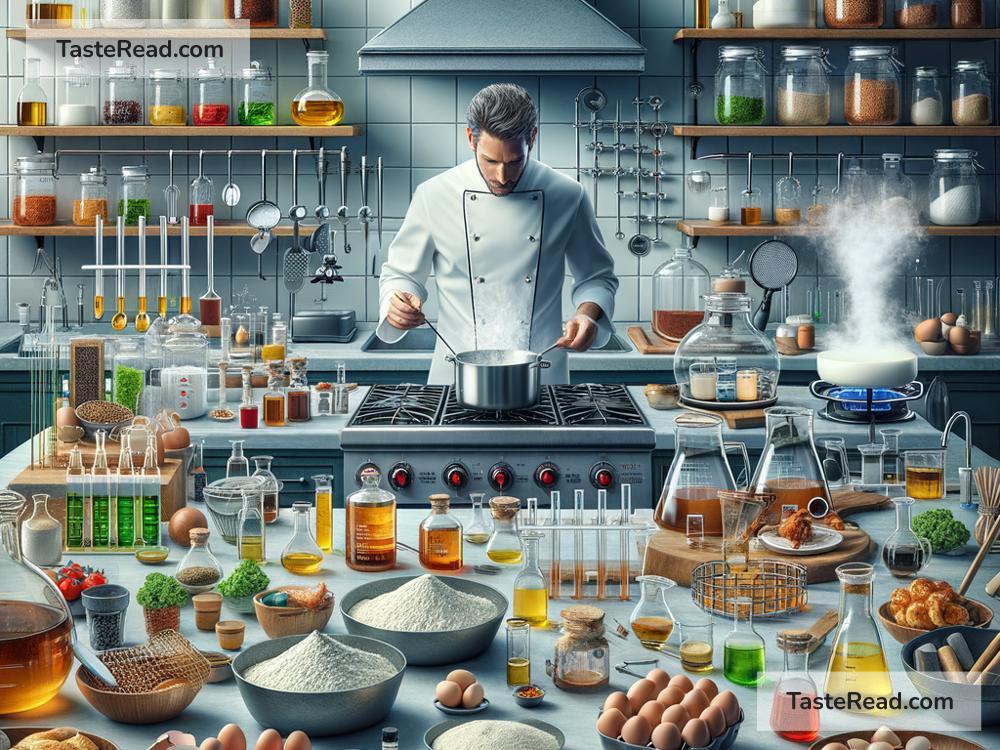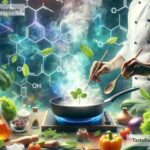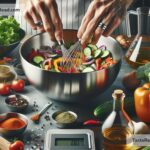The Science of Cooking with Chemical Daring: Techniques and Tips
Cooking is more than just making food taste good; it’s a wonderful mix of art and science. Behind every sizzling pan and bubbling pot, chemistry is at work. Understanding this science can help you unlock new ways to experiment in the kitchen – with a dash of daring! This blog dives into the fascinating world of cooking chemistry and offers easy tips and techniques for pushing boundaries while keeping things simple and fun.
What Is the Science of Cooking?
At its core, cooking is a combination of chemical reactions. Every action, like chopping onions or boiling pasta, triggers these reactions that transform ingredients into delicious meals. Heat, acid, salt, water, and even air play important roles in how foods change texture, flavor, and appearance.
For example:
- Heat breaks down tough fibers in vegetables and proteins in meat, making them tender.
- Acid (like lemon juice or vinegar) adds brightness to dishes and can “cook” certain foods (think ceviche).
- Salt not only boosts flavor but also improves how foods retain moisture.
- Air introduces structure, such as making cakes rise when you whip egg whites.
By understanding these principles, you can approach cooking like a scientist – curious, creative, and ready to experiment.
Cooking Techniques to Get Started
Let’s explore some fun techniques where science shines brightest in the kitchen. These methods will also give you a chance to be daring and try new things!
1. The Majesty of Maillard Reaction
One of the most magical processes in cooking is the Maillard reaction. This occurs when heat causes proteins and sugars in food to interact, leading to browning and rich flavors. It’s responsible for the crust on roasted steak, golden toast, or caramelized onions.
Experiment Idea: Test how temperature impacts browning. Sear meat at high heat for shorter periods vs. slower cooking on medium heat. Which method leads to bolder flavors? You might be surprised!
2. Sous Vide for Precise Cooking
Sous vide is a technique where food is vacuum-sealed in bags and cooked slowly in water at a precise temperature. This process relies on steady heat transfer – ensuring steak, chicken, or eggs cook evenly while retaining moisture.
Experiment Idea: If you don’t own sous vide equipment, try replicating the technique by simmering bags or jars in water. For example, “poaching” eggs this way creates creamy, custard-like results.
3. Freeze, Thaw, and Transform
Freezing can do wonders for food texture. When water in food freezes, it expands and breaks down cell walls. This is why frozen fruits can feel softer after thawing, perfect for smoothies or desserts.
Experiment Idea: Try freezing tofu. Once thawed, it becomes spongy and better absorbs marinades. This trick also works for fresh herbs – blend frozen basil with olive oil for easy pesto-making!
4. The Curious Case of Baking Soda
Baking soda isn’t just for making cookies rise. In cooking, it’s a chemical powerhouse. When added to water, it raises pH levels and quickens reactions. An example? Boiling bagels in baking soda water creates that chewy texture and shiny crust.
Experiment Idea: Add baking soda to boiling water for vegetables like green beans. This preserves their bright green color while softening them faster. It’s a simple trick with science at its core.
5. Fermentation: Let Time Do the Work
Fermentation uses microbes like bacteria or yeast to break down sugars in foods, producing tangy flavors and gut-friendly benefits. Think yogurt, kimchi, kefir, or homemade sourdough bread – all products of delicious chemical reactions over time.
Experiment Idea: Start small with a simple fermentation project, like pickling vegetables. Mix salt, water, and spices, then store veggies in jars to watch the magic of fermentation unfold for a few days. It’s a tasty science experiment.
Tips for Daring Explorations in the Kitchen
Now that you’ve dipped your toes into food chemistry, here are some tips to go even further in boldly experimenting with flavor, texture, and techniques:
-
Blend Ingredients Creatively: Combine sweet and savory elements, like honey glazed on bacon or adding a hint of cinnamon to slow-cooked beef. Don’t shy away from trying unexpected combinations.
-
Learn About pH Levels: Acidity matters. Vinegar makes pickles crunchy, while adding buttermilk to baking creates tender cakes. A digital pH meter can be a handy gadget for testing your culinary experiments.
-
Control Temperature Precisely: Temperature changes everything. Use food thermometers to measure internal temperatures for perfect doneness – whether it’s a gooey molten cake or a juicy roast chicken.
-
Play with Gelling Agents: Gelatin and agar are great for creating textures like jiggly desserts or thick sauces. Dare to make gummies or panna cotta using these ingredients.
-
Understand Ingredient Interactions: Experiment with substitutions to see how they affect recipes. For example, swap oil with applesauce for healthier muffins, or replace sugar with honey and observe texture changes.
Final Thoughts
Cooking is like science – full of discovery and experimentation. By understanding the chemistry behind your meals, you can become more daring in the kitchen and find new ways to surprise your family and friends. Use heat, acid, salt, and air as your tools. Try sous vide, fermentation, or simple tricks with freezing and baking soda. And most importantly, don’t be afraid to fail! Each experiment teaches you something new.
So, grab your spatula, don your lab coat (or apron), and get ready to cook with chemical daring. Science tastes delicious when served!


